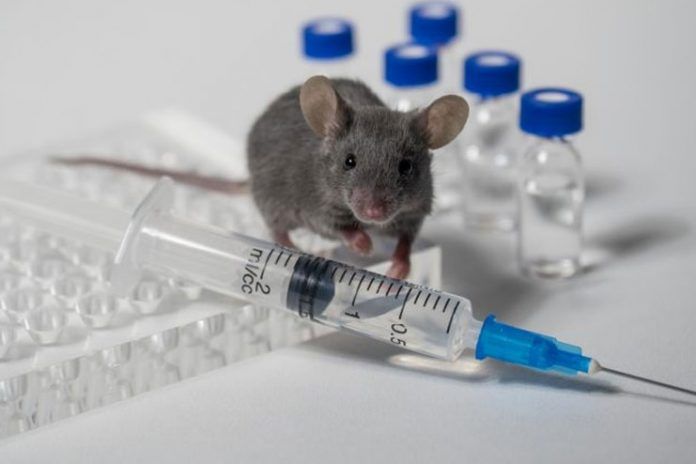Cognition does play a crucial role in our day to day life. It goes without saying that improving this will not just impact one’s daily activities but also help boost the overall functioning of the body.
A new study (R) conducted by the researchers from the Stanford Medicine has found that blocking a certain protein’s activity with the antibodies does pan out to be a beneficial factor in restoring the cognition and abilities in the mice.
Wyss Coray has been working in this specific domain of research for quite some years trying to scrounge for ways to find the answer behind what causes the brain to lose its acuity with the advancing age. The primary focus of the researchers was on a specific class of brain cells known as the microglia which accounts for the brain’s immune cell as well as garbage crew.
Apart from being a contributing factor to the brain activity, the microglia does also impact the brain health by scarfing up the cellular debris along with the protein deposits which are left behind or cause a build up because of the metabolic activity in the body.
Over the years as we age, the garbage collecting activity of the microglia does diminish. But, the catch in this is the fact that we fail to recognize how the cognitive losses is responsible for this specific condition altogether. But, the microglial malperformance is the one responsible for the overall neural degeneration on the long haul.
Wyss-Coray, the D. H. Chen Professor II and a senior research career scientist at the Veterans Affairs Palo Alto Health Care System who is also the lead author of the study stated that majority of the genes whose high risk variants have recently been linked to the Alzheimer’s disease is found to be active in the microglia in the brain.
He further explained saying that with this study, they are pretty sure they have discovered a way to get these cells back on track when it comes down to their functioning and make them work the way they used to before senescence.
The process of phagocytosis is the primary method that microglia uses to scavenge the waste material around the brain. The conducted study focused on adhering to the usage of laboratory techniques for identification of the mice genes whose activity either boosts are degrades the process of phagocytosis.
Blocking out the gene functionality
The investigators worked by excluding 3000 genes that encode protein that could also be targeted with drugs or have already been done with. One step along the way, they did block out each gene’s ability to encode a protein. The main focal point of this was to find and assess how the blocked protein activity affected the ability of the cultured microglia that was extracted from the mice.
Additionally, a parallel study was conducted too in which the researchers worked along to find which one of these approximately 3000 genes are more or less active in the microglia from the hippocampi of young mice in comparison to the old mice.
To the surprise of the researchers, they did find that it was just one single gene out of the 3000 genes that ended up affecting the microglial phagocytosis and whose activity did increase over the advancing age.
They also did find that the older microglia produced quite a lot more copies of the gene as a proxy for the salient upregulated production of the protein in comparison to what the younger ones did. They also found that knocking out the function of this did greatly improve the microglial phagocytosis process altogether.
The gene, CD22, which was finally targeted as the tentative suspect in the process was implicated to be the primary one responsible for the microglial garbage removal altogether.
In one of the follow up experiment, the CD22 protein was found to be expressed three times more as often in comparison to what the researchers found in the young mice. These proteins could successfully be blocked by the antibodies and does successfully express everything targeting the cell-surface proteins.
Treating with antibodies
The team of researchers injected antibodies to the CD22 protein into the hippocampal region of the mice on one side of the brain. Additionally, as a test run, they also did inject the antibodies capable of binding to the brain on the other side of the brain.
Alongside the antibodies, the researchers also injected fluorescence labeled bits of myelin into the protein. This helped work as a marker and coated numerous of the nerve cells altogether and does provide with insulation as well. The reason behind the same was because of the fact that the myelin debris accumulates inside the aging brain and can be persuasive in inhibiting the function of the microglia.
Microglia are the only cells in the brain found in the mice that actually did express the CD22 protein which is why the witnessed difference is mainly because of blocking the CD22 blocking antibodies’ effect on the microglia.
With addition to all of this, the researchers also did conduct some analogous experiments in substitution to a protein known as the beta-amyloid. The buildup of this protein is what has been found to be one of the markers for the Alzheimer’s disease.
In another case, alpha-synuclein was another protein associated with the induction of the Parkinson’s disease. In both the cases, the researchers did find that the microglia exposed to the CD22-blocking antibodies outperformed the rest in comparison to what was happening on the other side of the brain ingesting the neurodegeneration-linked substances.
Following this, the researchers did expand the period of exposure from 48 hours to two months. Additionally, they also reconfigured the injection technique to provide with consistent CD22-blocking antibody. The researchers as an observation did find that the mice became smarter. Additionally, blocking the CD22 on their microglia also was found to restore their cognitive function to the level of the younger mice.
In this Article




















